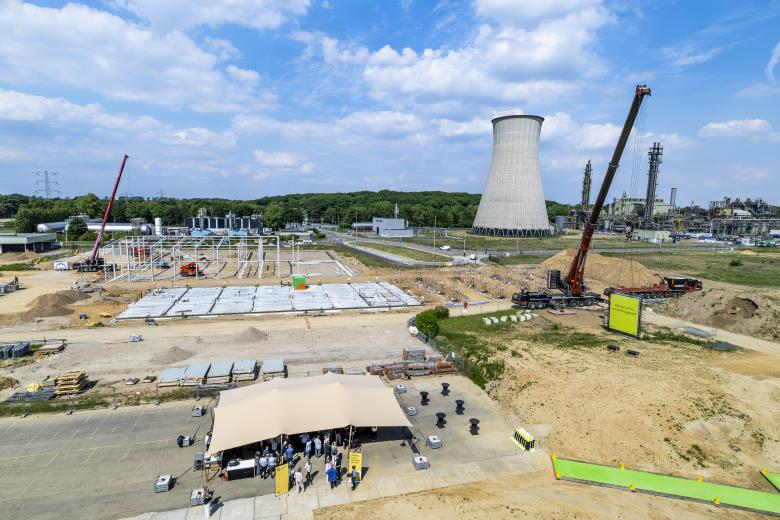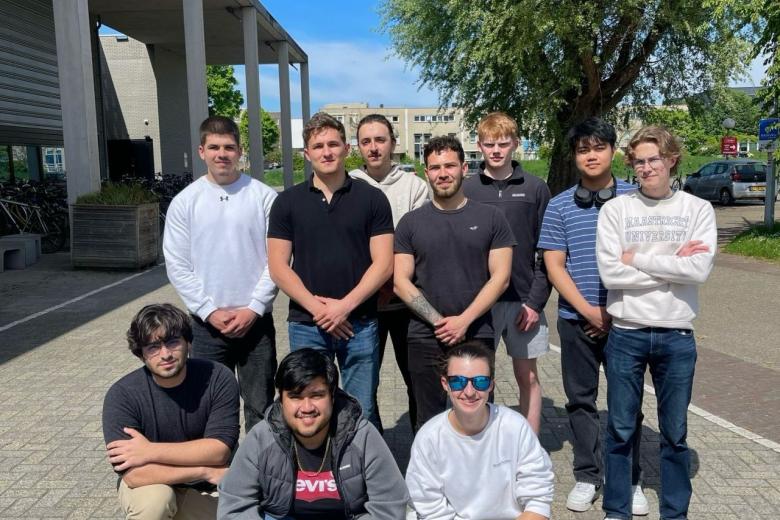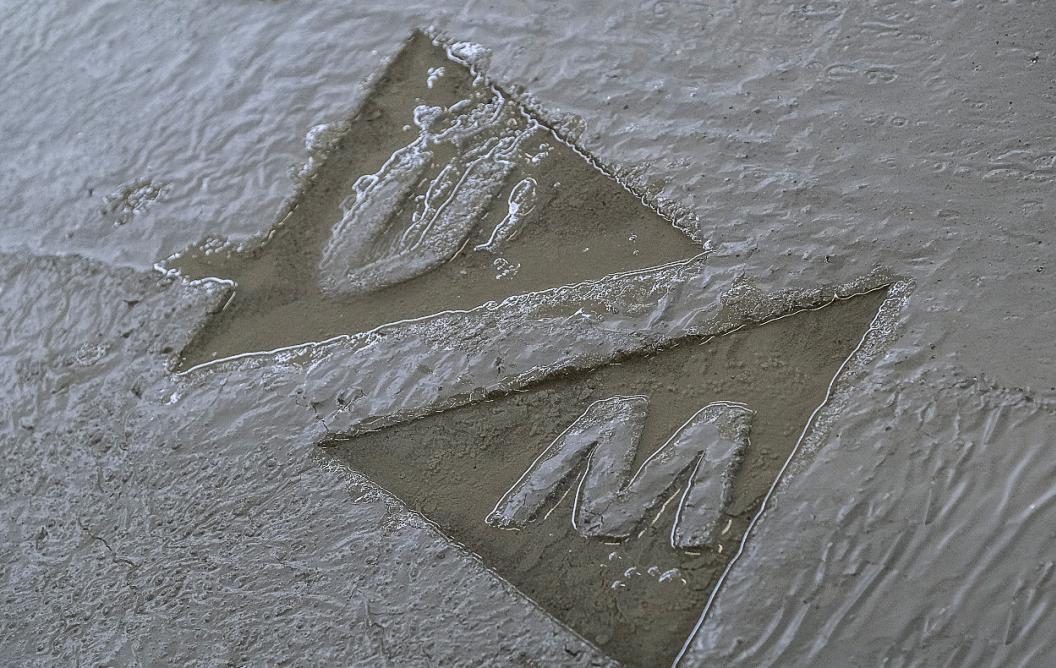Concrete progress for ETpathfinder
A lot of talk has been going around about the prototype for a new generation of gravitational wave detectors: ETpathfinder. And now, after many months of careful planning and preparation, the first visible steps towards realisation are finally complete.
The location of this innovative laser-interferometer is the former transport hall of a local newspaper. The concrete floor that will serve as a low-vibration base for ETpathfinder is poured and drying as we speak.

Keep vibration
ETpathfinder will be a testbed to measure incredibly small length changes, equivalent to a tiny fraction of the size of proton. To achieve this mindboggling sensitivity ETpathfinder has to sit on a floor that is extra stable.
ETpathfinder project leader Stefan Hild explains: “In order to make the floor very stable, it sits on 169 pillars which have been drilled into the ground and it is made out of two separate parts: The other part is connected to the building itself with all its noise from ventilation system and humans, and then there is an inner part of the floor on which the core of ETpathfinder will sit. Splitting the floors guarantees that ETpathfinder will not feel any of the movement of the building itself and for instance the wind pushing against the building walls and therefore move the ground.”
It is a unique project with unusual challenges and that makes it extra special to be able to contribute to this.
- Construction Project manager Ralph Herben
Building the clean room
The concrete will take two weeks to dry, after which the building of the installations can commence. The tender is currently underway for the special clean room covering a volume of 6000 m3. The construction of this clean room will take place between October 2020 and February 2021. The construction of ETpathfinder itself will start in March 2021.
Splitting the floors guarantees that ETpathfinder will not feel any of the movement of the building itself.
- ETpathfinder project leader Prof. Stefan Hild
About ETpathfinder
ETpathfinder is a R&D infrastructure for testing and prototyping innovative concepts and enabling technologies for the Einstein Telescope, the first of a new class of future gravitational wave observatories.
The discovery of gravitational waves from merging black holes and neutron stars by Advanced LIGO and Advanced Virgo marked the beginning of new era in observing our universe and scientist are keen to fully open up this new window to the (dark side of the) cosmos.
ET will detect several hundred thousands gravitational wave signals per year and allow us listen to the sound of merging black holes across the entire universe. For the first time, researchers will be able to study the precise structure of neutron stars, the birth of black holes and the structure of the universe immediately after the Big Bang.
Also read
-
Brightlands Circular Space focuses on integrated approach to entire plastic value chain
Construction has officially started today in Limburg of Brightlands Circular Space, a demonstration facility that accelerates the transition to circular plastics.

-
MaaSec – The Netherlands' Only Active ACM Student Chapter captures the flag
In January, a group of Computer Science students at Maastricht University launched MaaSec, currently the only active ACM student chapter in the Netherlands. And in just a few months, they've already made a name for themselves; especially in the world of Capture the Flag (CTF) competitions.

-
Publication of the National Vision on Sustainable Carbon in the Chemical Industry
On April 22, the National Vision on Sustainable Carbon in the Chemical Industry was published for public consultation.

